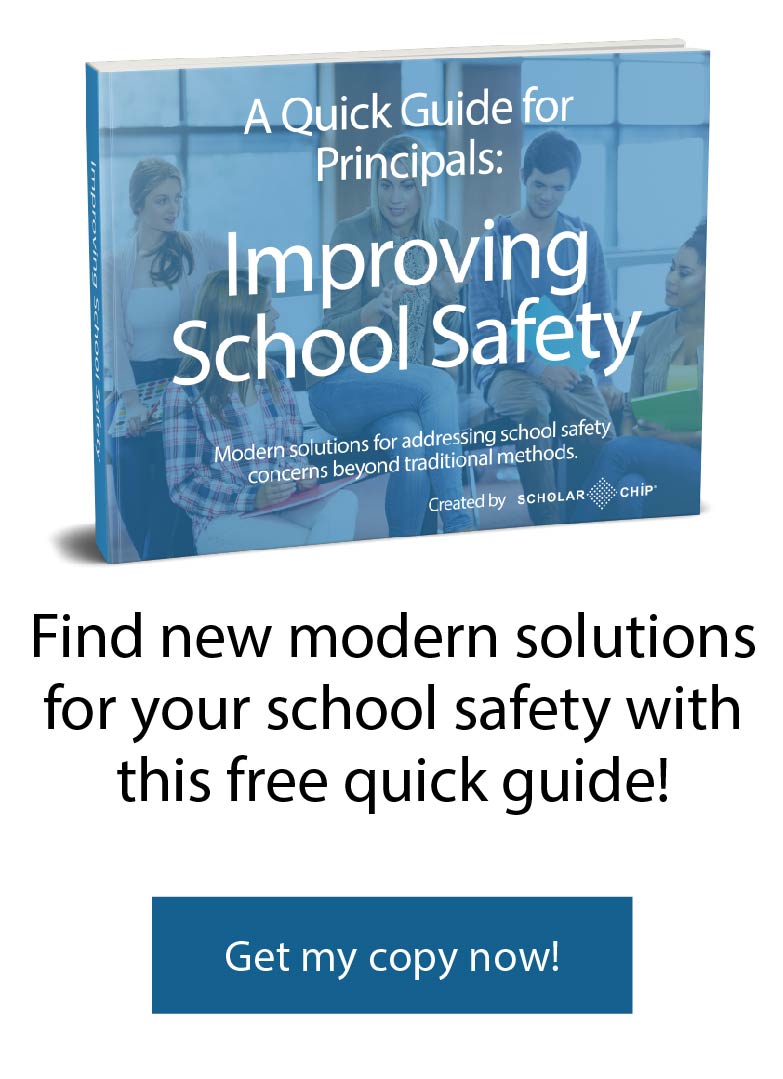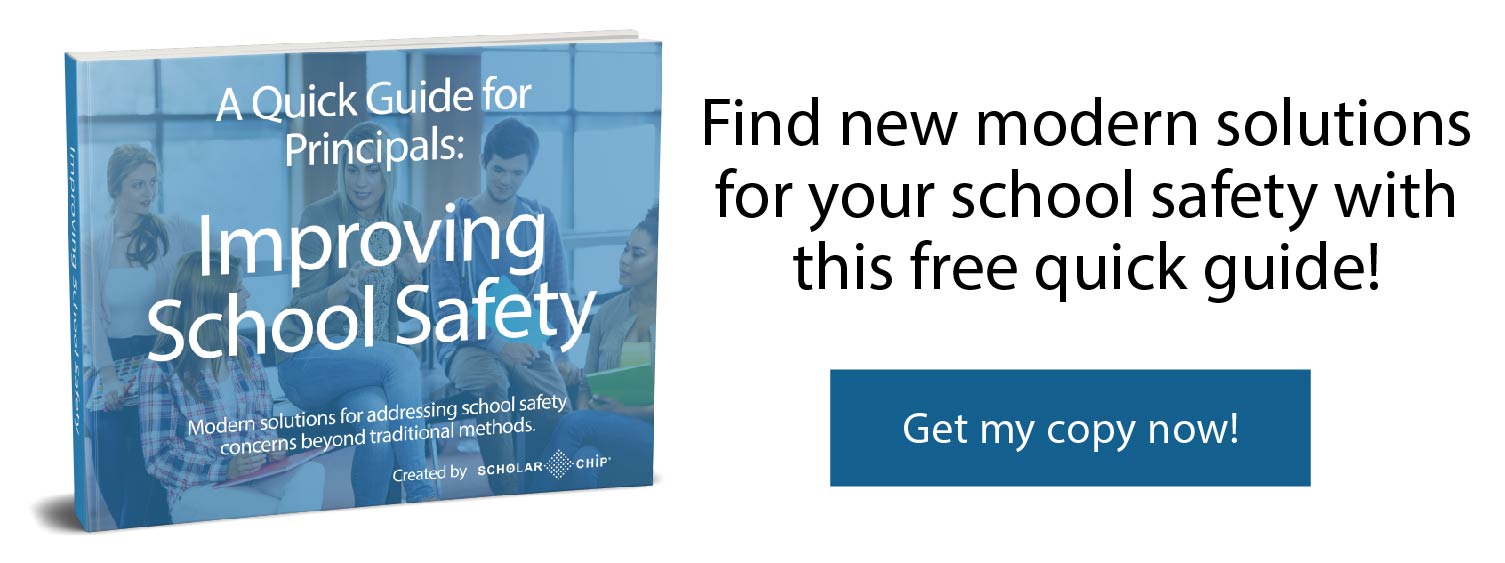Only a small fraction of violent acts are reported by schools in fear of repercussions. Common security issues are incidents of bullying, fighting, and truancy. While parents and staff may rally around the idea that armed guards and metal detectors are necessary to keep their children safe, less overt measures may prove to be better at protecting schools.
The challenge for school leaders is to secure against potential security threats without creating a hostile environment. Administrators must take on the public relations task of assuaging fears while allocating limited resources to systems that will effectively keep students and school personnel safe.
Potential Security Threats
It’s difficult for school officials to know if a first-time visitor is a potential risk to students and staff on campus. Even in small, close-knit communities, it is tough for neighbors and parents to know who is a potential threat without judgment.
While staff, students, and parents may fear outside intruders from entering their campus grounds, bullying and fighting inside the school are the threats children most often must deal with each day. The most recent NCES Indicators of School Crime and Safety reports that nearly 30 percent of students, ages of 12 – 18, said they were victims of crime in school in 2016. More than 220,000 teachers were physically attacked, and 374,000 were threatened with an injury during the 2015-2016 school year.
Additional threats to student safety are created when students are unsupervised, as happens when they cut classes to either spend time in isolated areas of the campus or leave school grounds. Younger students and those with special needs can become lost or left behind when one teacher must supervise many children outside the structure of a classroom environment. Students are drilled in emergency procedures, yet are still confused during lock-downs and evacuations make it challenging. Student’s need to feel self-motivated to learn and educate themselves when there is a threat present on or even off campus.
How Schools Have Responded to These Threats
According to the NCES School Safety and Security Measures report, nearly all public schools in the U.S. have secured their building entrances and exercise some control over who enters during the school day. The majority has installed security cameras to monitor hallways and require faculty, staff and visitors wear ID badges so that unauthorized people in the building will be quickly identified. About 10 percent of the nation’s public high schools use metal detectors. New Florida legislation requires a Safe-School Officer in each public school. This is in line with a growing call across the country to strengthen school security with armed guards.
Metal detectors and armed SROs may offer parents and students a sense of security, but they do little to prevent the most prevalent threats. According to the National Association of School Psychologists, these overt security measures may weaken security, which hampers communications and fosters isolation and non-cooperation between students and teachers. The Federal Commission on School Safety, in their December 2018 final report, concluded that developing a “culture of connectedness” is essential to identifying potential security threats and keeping schools safe. The fearful climate created by fortifying schools with prison-like hardware may undermine efforts to create a favorable school climate for education success.
Technology Solutions that Align with a School’s Mission
Secure Door Access
While locking doors and using an intercom system to buzz people in through the main entrance is an ok start, a comprehensive smart technology system that controls every door in the school grounds is the gold standard for building access security. Adapting existing exterior and interior doors to accept chip-imbedded ID cards in place of keys is a readily available solution that schools are beginning to implement. With a secure door access system, students and school personnel tap their smart ID cards at a card reader to connect where access permissions are programmed for specific students and staff. This is a very helpful feature to lower security threats on campus.
Visitor Management
Parents, vendors, and others in the community arrive at a designated school entrance when visiting. Will be able to determine if the new visitor is a potential at-risk threat or not. Even the best-trained personnel cannot be aware of every circumstance surrounding the new visitors. A visitor management system that includes the tap of a driver’s license will help scan their identification with a registered sex-offender database to flag a potential at-risk visitor. These systems may be integrated with current or new systems .
Student ID Cards
Most schools require faculty and staff to wear general identification. Expanding smart ID cards to students with smart ID cards provides multiple benefits. With a chip-embedded card, students may check themselves into a specific building or classrooms by tapping their smart ID cards toward the card readers at the entry points. This connects students to keep track and register their own attendance, allows door access and may be integrated with POS systems for use in the cafeteria or school store. School personnel may immediately know if a student is in the building or missing school due to a notification system. Mobile applications carry this function to buses, the schoolyard, and off-campus field trips. In addition to providing accurate, real-time records, these systems give students a sense of autonomy — they take responsibility for recording their attendance — which makes for a more positive school climate. The bonus part is that if a student misses class or is tardy, a notification or alert will be sent to the proper parent allowing them to be in-the-know.
Behavior Management
As students advance through their academic careers, their behavioral records often follow them. Incident reporting is often inconsistent as a student encounters many different personnel over the years, each with different views on what constitutes a reportable incident or what is and isn’t appropriate. A comprehensive technology platform such as a behavior management system simplifies reports and helps students get back on track with their lives, and academic career. it makes it possible to recognize problematic behavioral patterns that might otherwise be missed. Systems that include a student learning component to teach expectations and norms hold students accountable for their conduct. With ScholarChips’s Alternative Behavior Educator (ABE), students will be given a reward system based off of their performance, along with centralized information to school officials.
Lower Potential Security Threats
It’s a schools responsibility to ensure safety for their students and provide a piece of mind for parents so that students can learn in a safe and fun environment. School culture and climate is a large factor for the success of a school and should not be taken lightly. Campus culture is huge and school violence will always be there, but there are proactive steps that can help reduce school threats and violence from occurring before they happen. One proactive approach to reducing these issues is by utilizing and implementing smart technology such as ScholarChip toward your campus.
ScholarChip is an all-in-one, platform solution to help reduce school threats and address the important issues surrounding school safety. Data from students, faculty, and stakeholders are leveraged to manage school access, attendance, and behavior management through the platform tools to increase safety and promote the campus climate schools are looking for.
If you would like to drastically reduce potential security threats before they occur so that staff, students and parents are happy and feel safe, feel free to reach out and schedule a 1-on-1 walkthrough with one of our solution specialists today!


